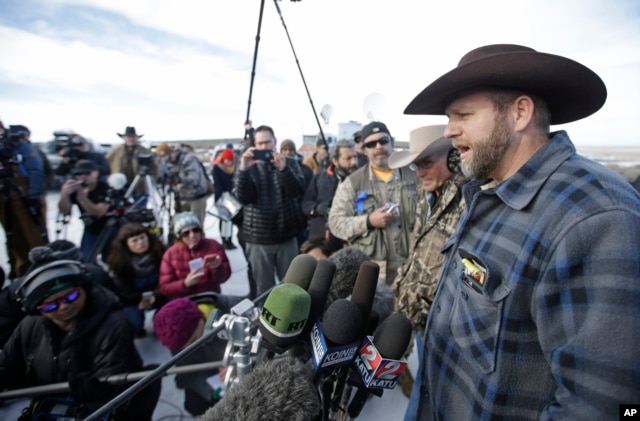Occupied Oregon Refuge Is Critical Stop on Birds’ Flyway

January 06, 2016
Occupied by armed protesters, Malheur National Wildlife Refuge is described as remote and barren. However, it is not a “nameless piece of ground,” said Brent Fenty, executive director of the Oregon Natural Desert Association.
“It is critically important to wildlife and enjoyed by millions» of human and avian visitors, he said.
In the middle of Oregon’s high desert country, Malheur is a critical stop on the Pacific Flyway, a main north-south route for migrating birds. Some 25 million birds pass through it. As much as 66 percent of flyway traffic will rest on the rivers and lakes of Malheur, making for a vast squawking, flapping spectacle. Thousands of human visitors come to gawk at it.
“Very unique” country, said Craig Gehrke, director of the Idaho Office of the Wilderness Society. “It was recognized 100 years ago that this is special — special for wildlife, special for this country.”
President Theodore Roosevelt established Malheur in 1908, after a pair of wildlife photographers discovered that most of the egrets on Malheur Lake had been killed by plume hunters collecting feathers for ladies’ hats. It was one of the earliest acquisitions of the nascent National Wildlife Refuge System, which now encompasses 38 million hectares to protect wildlife and its habitats.
Privatizing public lands
Those who are occupying Malheur say they are acting on behalf of the American people — and this has the senior director of the Wilderness Society baffled.
Ammon Bundy, a leader of the occupying protesters at the Malheur National Wildlife Refuge, speaks to reporters during a news conference at the refuge near Burns, Ore., Jan. 6, 2016.
“These lands already belong to the American people,” Jeremy Garncarz said via Skype. “Our great outdoors are one of our greatest assets. It’s the backbone of our democracy and who we are as a country.”
Before Malheur was formed, the land primarily was used for cattle grazing, and ever since, the refuge has been in something of a tug of war between conservationists and ranchers.
“There have been conflicts all along,” Gehrke said.
Grazing has been allowed at the refuge since its creation. Fees typically are lower than those charged on private lands, but there is a lingering belief among some that federal land use should be free.
Fenty said the refuge has positive relationships with most local ranchers. “This particular refuge was established way back in 1908. It’s not as though anyone is learning to live with this refuge now,” he grumbled.
His group, the desert association, provides volunteers to work on the refuge by treating invasive weeds, removing obsolete fences and building new ones to separate the livestock of area ranchers from the bird habitat.
Garncarz sees the refuge takeover as part of a larger effort by politicians, political candidates and others to privatize public lands in America.
“The fact that a few militant extremists have decided to lock us out for their own interests and the interests of a few is really disheartening, and it’s sad,” he said.
Garncarz said most Americans support public lands. “We have some strong polling data across the country that tells us that the American public wants public lands. That said, the folks that are advocating for this seem to be feeling like they’re gaining momentum.”
Potential for harm
Every year, the staff at Malheur develops a water management strategy, allotting the water available from rain and snow to provide habitat for the birds arriving in early March.
The refuge begins “filling these important ponds, wetlands and reservoirs in late winter,” it says on the National Wildlife Refuge System website.
And this is what is on the minds of members of the Friends of Malheur National Wildlife Refuge, a group of advocates and volunteers. “If these people stay long, they will impact the refuge’s management of water, which will greatly reduce the habitat that hundreds of thousands of birds depend on for migration and nesting,” the group wrote on its Facebook page shortly after the takeover, “and there is potential for great damage to the refuge’s massive water delivery system.”
The posting has since been taken down, and VOA could not find anyone to say whether there is real danger to Malheur’s water management. But the high desert has had a good snowpack this winter. As of Tuesday, something of a thaw had set in, meaning “water is flying in different places,” Fenty said.
At the very least, it is a lost opportunity, “lost habitat,” he said. “It is really hard to stand by and watch this.”


